HP Elite Mini 800 G9 Power Consumption and Noise
The unit came with a 90W HP power brick. Older 35W TDP models would come with 65W bricks that were usually smaller, but this is nowhere near the size of the larger 130W+ units we see on the higher TP models.
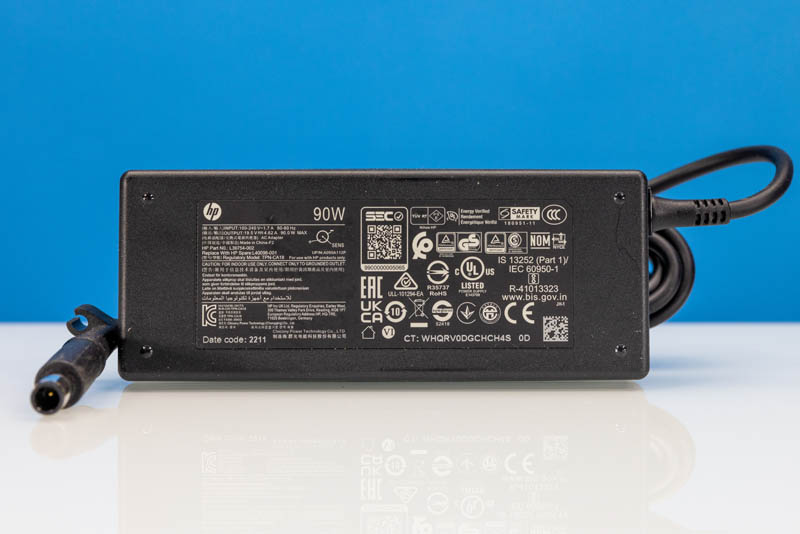
Idle was generally in the 4-7W range in the Windows 11 Pro desktop but bounces around a bit. We saw power spike to a burst of 65-66W before throttling. Dropping down the system used 45-48W after the initial burst of speed gave way. Those are some great power numbers.
On the noise side, this system was absolutely great! Our 34dba baseline studio was raised to 34.4-34.8dba with the system idle. Under the max turbo speeds, we were only in the 34.8-35.2dba range. This is so quiet we can have it powered on in the studio.
Key Lessons Learned
Normally we would focus on the Core i5 vs. Core i7 performance or the awesome noise characteristics. Not in this review.
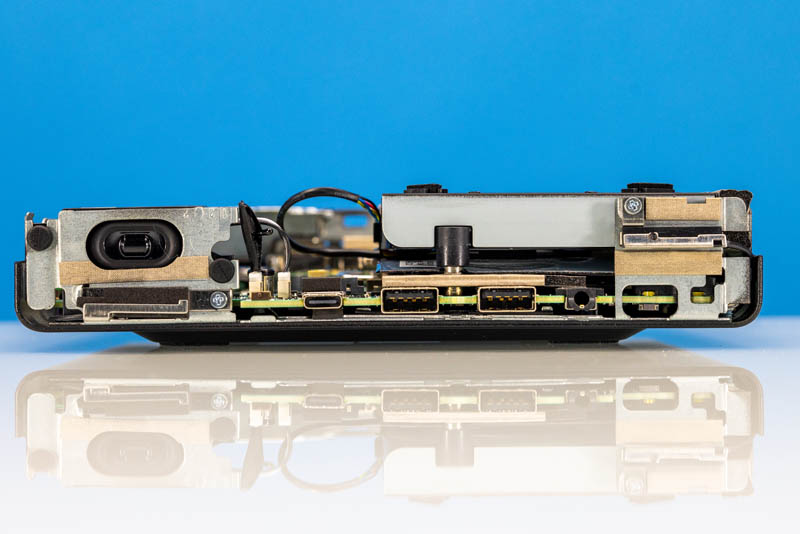
We tried to install the HP Flex IO V2 10Gbase-T NIC in the system. Physically it worked, but it gave us a secure boot error that required going into the BIOS to fix. One challenge, described in the video, was that our ~1 power on hour unit had a BIOS password. In the past, one could just use a jumper to reset, but that was not present on our system. We double-checked online resources, and when we did, we found the HP Support site using our images, without permission, on at least 13 videos from our HP EliteDesk 800 G3 Mini CE Review. I notified HP that they were using the images from our review here without permission.

HP also used to have a tool to remove the administrator password, but it is no longer offered. So we went to the support site. Since this was a “used” but really an excess inventory unit from a reseller, we still had 34 months on the warranty.
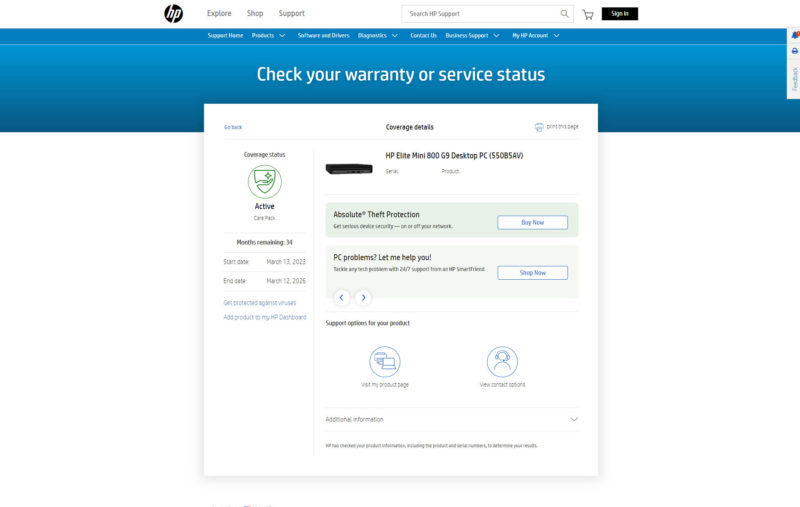
HP’s support told us that they no longer have the physical jumper, the removal tool, and in this generation, the option if you need to reset an administrator password is to send it back to them and to replace the motherboard.

From a circular economy perspective, this is a terrible practice. HP’s corporate decision to increase eWaste to generate more service revenue is the exact opposite of the company’s ESG initiatives.
One may argue that it is for security, but this does not make sense. The reason is that we show the unit in the video running the 2.5GbE NIC. That did not set off a secure boot issue. If the goal were really to prevent folks from running genuine HP Flex IO NICs, to avoid unauthorized hardware being used, then that 2.5GbE NIC installation and removal of the dual USB 3 Flex IO V2 should have thrown the same secure boot issue. The HP Elite Mini 600 G9 did not throw the secure boot issue either, it just worked with the same HP NIC:
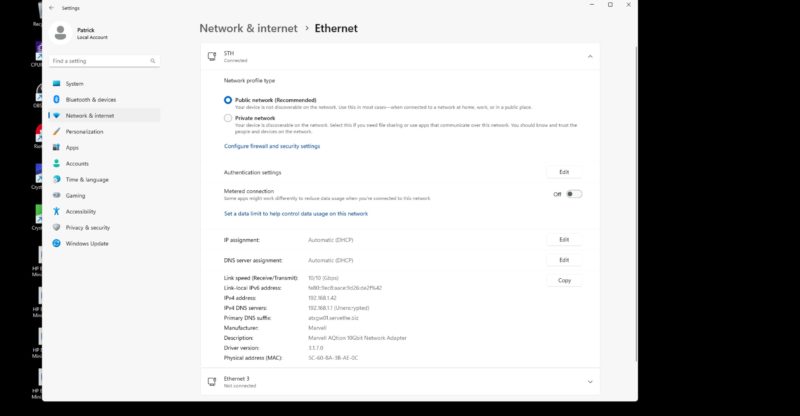
Between what seems like a real hardware platform security gap, HP using our copyrighted work without permission, even after being notified, and a policy to generate more eWaste to increase service revenue, our HP Elite Mini 800 G9 review was not our favorite. While we like the platform, it is going to be harder to say HP is ahead of Lenovo (HP is well ahead of Dell at this point) in the 1L PC space.
Final Words
The Intel Alder Lake transition was great for the 1L PC market. Updated CPUs mean that HP was able to create a powerful and expandable system with a minimal noise footprint and a modest power consumption figure.
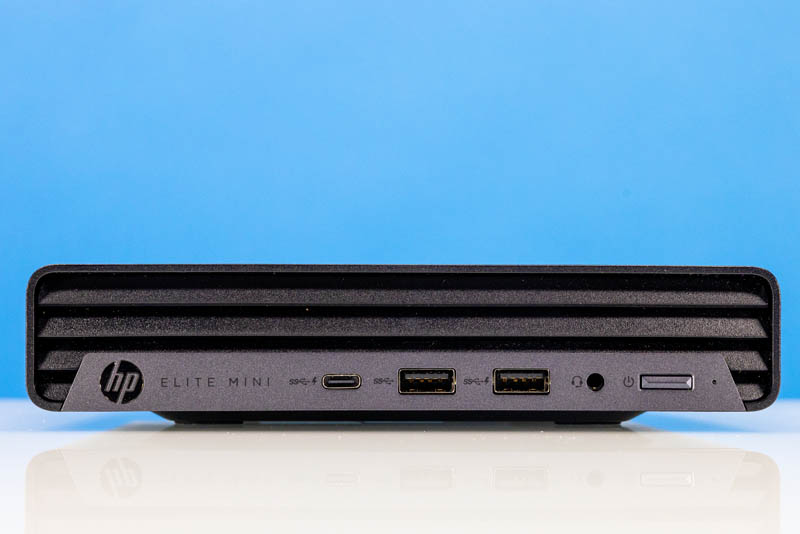
The HP Flex IO NICs are perhaps the best in the industry at this point and the Flex IO system, while we wish it were standardized, has great options. Still, as these systems come off lease, the difficulty of wiping systems and getting them ready for a second use is going to be a negative from a Project TinyMiniMicro perspective.
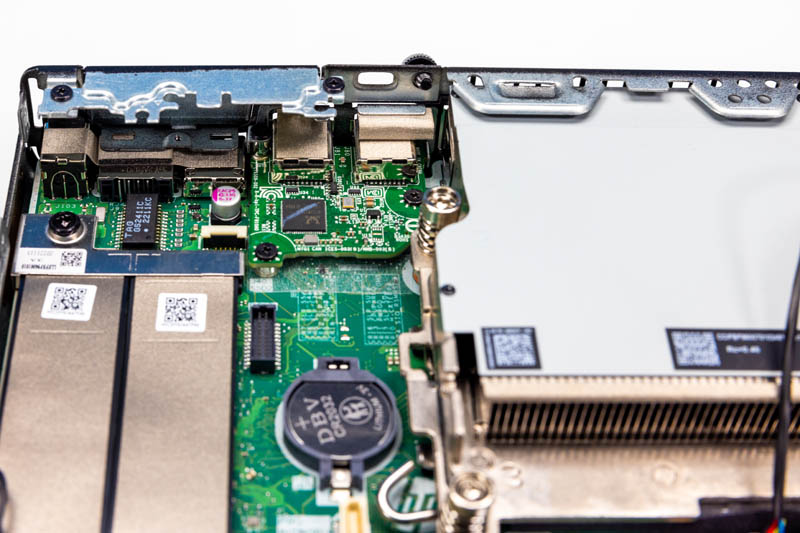
Overall, the HP Elite Mini 800 G9 is a good system. Since we liked the Elite Mini 600 G9, and with these 35W 1L systems offering little differentiation, the 800 G9 is a system we like as well.




It’s amazing to me that the manufacturer of a product would resort to stealing images of their own product! That’s an unfortunate blemish on this otherwise thorough review.
I purchased a EliteDesk 800 G2 DM 35W with i7-6700T off of Amazon for 180 second hand in part thanks to your reviews (even though on newer ones) for a cheap low power ESXi box for a few things (Docker and a Blue IRIS vm) vs my Dell 730 which I generally turn off when not needed and I have been very happy with it so far. Given its power usage its a no brainer for some simple stuff.
HPE come on, how is this even possible? Stealing images of your own product from other sites!
Given the issues HPE has enforced with second hand hardware, I will always steer clear of HP and HPE. It’s unfortunate, but they have shown no desire to support the second hand market.
Anyone notice that Patrick’s You Tube thumbnails are beginning to look like a magazine rack at Barnes & Noble? Loud, yellow and red.
Bios password now follows laptop standard for security reasons. Makes perfect sense for mini PC chassis
I’m a bit confused. If the BIOS password was not included from the eBay vendor, couldn’t one just ask the reseller what it is? If the reseller doesn’t know, what does that mean about the origin of the device?
HP often use “hpinvent” as their default firmware passwords. You could try that Patrick if you haven’t already.
The story with the 10Gbe Flex module needs some expanding… did it work in the G6 systems? Any performance issues? Part numbers and prices?
Sucks that it bricked this system – but don’t leave us hanging!
I’ve seen similar irksome behavior from HP desktop systems(my favorite was the batch that accepted an HP-provided firmware update without complaint; then required a hands-on-keyboard entry of the BIOS password on every single unit before they were willing to boot again, that was fun to sort out), so I’m not surprised surprised; but from an architectural perspective I’m having a hard time understanding why swapping in any peripheral, much less a first-party option explicitly supported for a given model, would cause secure boot problems.
It would make sense if perturbing the hardware state caused the TPM to refuse to unseal any secrets it had previously stashed away; exactly how twitchy those are seems to vary by platform; but a change to internal PCIe peripherals would certainly qualify; but that also wouldn’t matter for a new-to-you system.
It would be sloppy; but not shocking, if there’s some sort of confusion with what keys are being used to sign the UEFI drivers for the 10GbE NIC vs. which ones are trusted by the 800 G9 firmware, and even less surprising if, hypothetically, it were a 3rd party card, so I wouldn’t necessarily bet on being able to use that NIC for PXE or other preboot networking; but that still wouldn’t preclude booting the system and letting the OS decide what it wants to do with the peripheral.
It sounds like HP is either classifying an unrelated anti-tamper/configuration lockdown feature as part of ‘secure boot’ or taking an atypically expansive interpretation of what that means.
The card was purchased still HP sealed via distribution (Ingram IIRC?)
Pierre – yes. More on that soon. https://forums.servethehome.com/index.php?threads/review-request-hp-flex-io-10gbit-module.39590/
The 10Gbe module looks interesting. I’ve got 2x i5-12500 and 2x i7-12700’s in my setup. Oddly enough the i5s do not have a vPro sticker but have all the full vPro functionality including full AMT. not sure if they just ended up with wrong stickers. All units purchased at massive discounts and much like others have seen, had hardly any use. One had only 8 hours power on. Great for homelab setup
I just took off the heatsink to swap the CPU to a i9-13900T and saw there was a button labeled with BIOS, maybe this is the magic button
Be aware, if you desire to run two M2 drives, you’ll require additional cooling. The second you fill both M2 slots, the system will post with a 901 error that you cannot bypass.
You will require the 2.5″ SATA tray (HP Part No. 13L70AA) that includes an additional cooling fan. Once connected, the system will move throgh post without issue.
Of course, this part is a bit challenging to come by much like the 10G NIC modules there for awhile.
Not sure why HP would even allow these to be sold without the extra cooling by default when they tout being able to run both M2 slots.
These are great little machines… I have 3 in a cluster that gives me one hell of a homelab or more compute in a small space than many SMBs or Mid-size orgs I’ve supported.
Hey Patrick,
I was watching your youtube video recently and you said the motherboard doesn’t have a CMOS reset jumper. Well, recently I borrowed one of those systems from a good friend of mine, its the Elite Mini 800 G9 with i9-12900T. While upgrading the RAM I noticed there’s a tiny little button sandwich between the SODIMM slots and the CPU heatsink, labeled CMOS. Isn’t this used for resetting the UEFI/BIOS? I also noticed removing the battery for 30 seconds can reset the UEFI/BIOS (but this may depend on the board’s initial settings). Thanks keep up the great videos!
And for SentientNumber6.
I have two Samsung 980 Pro M.2 installed on my G9 Mini and it doesn’t have any issues, even without the SATA cage it boots up fine. Not seen any errors at all! Maybe you should try reseating those drives?
Hey, I was actually about to buy a used G9, but asked if the BIOS pw was set, it is!
Thanks for making me aware of this.
Has anyone figured out, if it can be reset in any way?
I am still in talks with the seller, the price is good and it would be perfect.
A bummer you did not get the unit Nils, but better to save the headache and figure it out beforehand.
I’ve just installed a Google Coral TPU in my EM800 G9 (i5-12500) and it’s working great. VEry low power usage and now allows me to do processing using the TPU for Frigate in a Proxmox LXC. So far rock solid
I got one with i7 12700, and every time it’s under load it starts producing a screeching sound. It seems to be coming from somewhere around the CPU. Otherwise it’s almost completely silent, even when the fan is spinning. Anyone else getting that noise? Could it be that low quality that it’s normal, or is mine about to die?
Turns out the power supply of 90W wasn’t enough for it. After getting a 150W power supply there’s no more screeching and CPU-Z benchmark went up from 3.5k to 7k points.
Great review. I bought the i5-12500 model.
I want to buy the wifi card – the unit didn’t include it.
Do you know which exact model I should pick ?
I can’t find any reference on HP website ..
I went as far as replacing the bios chip to get rid of the password on an HP mini G6.
I flashed the replacement with default image prior to the board rework.
Worked great until the next time I powered it on, and then the password was back.
Sounds like this is common now, and I’ve heard of the same behaviors on Lenovo systems.
I’ve also heard there is a 2nd BIOS failback chip and a hash is used somewhere to track if a restore is necessary – possibly if both were replaced at once with default images it MIGHT work (or the HP Wolf security features may check with a server somewhere and re-download settings?).
Overall, it is MUCH more secure than it used to be. Annoyingly so, but IT departments are probably happy doer security reasons.
I would really appreciate it if you could test these machines in a lower noise environment. This provide has a TUV Rheinland ultra low noise certification which means it should have an operating noise level of 22 – 25dB(A). It isn’t possible to verify this if your studio noise floor is higher than this.